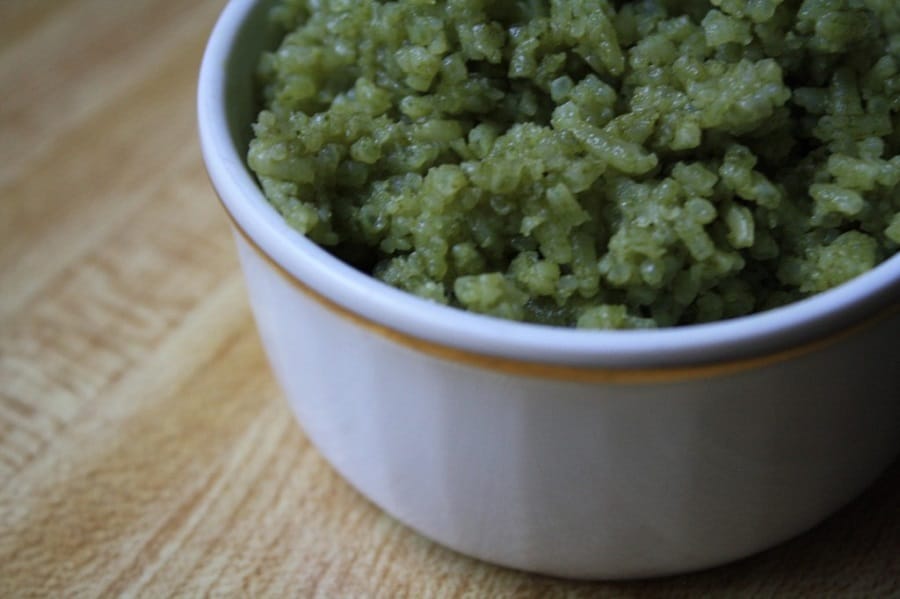Green tea rice, a culinary delight that combines the time-honored traditions of green tea and rice, embodies both cultural significance and health benefits. This unique dish represents a harmonious fusion of flavors deeply rooted in Asian cultures, offering a delightful experience for the palate and nourishment for the body.
The Origins of Green Tea Rice
Green tea rice finds its origins in the rich tapestry of Asian culinary heritage, where both green tea and rice hold esteemed positions. In Japan, the art of incorporating green tea into various dishes, including rice-based preparations, has been a longstanding tradition. This practice is also found in other Asian countries, where the combination of green tea and rice reflects cultural customs and historical culinary practices.
Health Benefits of Green Tea Rice
The amalgamation of green tea and rice results in a dish that not only delights the taste buds but also offers potential health benefits. Green tea is renowned for its antioxidant properties and the promotion of overall well-being, while rice serves as a significant source of essential nutrients and energy. When combined, green tea rice becomes a flavorful conduit for delivering these healthful attributes to those who partake in its consumption.
Culinary Significance of Green Tea Rice
The preparation of green tea rice yields a distinctive flavor profile that marries the earthy essence of green tea with the comforting texture and taste of rice. The subtle infusion of green tea imparts a delicate yet unmistakable aromatic quality to the rice, resulting in a dish that is simultaneously soothing and invigorating to the senses.
Cooking and Serving Green Tea Rice
To prepare green tea rice, one may use high-quality green tea leaves or matcha powder, which are carefully integrated into the rice during the cooking process. The choice of green tea can influence the depth of flavor and aroma in the finished dish. Green tea rice can be served alongside a variety of accompaniments such as grilled fish, pickled vegetables, or savory tofu, enhancing its appeal as a versatile and satisfying meal option.
Variations and Combinations
Green tea rice manifests in diverse variations across different cultures, each embodying distinct regional nuances and culinary practices. Variations may include the addition of ingredients such as toasted sesame seeds, nori (dried seaweed), or furikake (Japanese seasoning) to further elevate the dish. Additionally, creative combinations with green tea rice as a base can yield innovative, flavorful culinary experiences.
Cultural Significance and Traditions
In certain cultures, the preparation and consumption of green tea rice hold symbolic or ceremonial significance, often associated with auspicious occasions or traditional rituals. This underscores the cultural reverence and enduring traditions surrounding this delectable dish, adding an extra layer of depth to its culinary allure.
FAQ
- What is green tea rice?
Green tea rice is a traditional Asian dish that combines the flavors of green tea and rice. It is made by cooking rice with green tea leaves or matcha powder, resulting in a dish with a unique earthy flavor and subtle aroma. - How do you make green tea rice?
To make green tea rice, start by brewing strong green tea and using it to cook the rice, or by adding matcha powder to the rice during the cooking process. This imparts the characteristic green tea flavor and color to the rice. - What are the health benefits of green tea rice?
Green tea rice offers the combined health benefits of green tea and rice. Green tea is rich in antioxidants and has been associated with various health benefits, while rice provides essential nutrients and energy. As a result, green tea rice can contribute to overall well-being when consumed as part of a balanced diet. - Can I use any type of rice for green tea rice?
While any type of rice can technically be used to make green tea rice, Japanese short-grain rice is commonly preferred due to its sticky texture and ability to absorb flavors well. However, experimenting with different types of rice can lead to interesting variations in texture and taste. - What dishes pair well with green tea rice?
Green tea rice pairs well with a variety of dishes, including grilled fish, teriyaki chicken, stir-fried vegetables, pickled vegetables, and tofu-based dishes. The subtle yet distinctive flavor of green tea rice complements a wide range of savory accompaniments. - Are there any variations of green tea rice from different cultures?
Yes, there are variations of green tea rice across different Asian cultures. For example, in Japan, green tea rice may be prepared with toasted sesame seeds or nori (dried seaweed), while in other regions, additional ingredients and seasonings may be incorporated to create unique regional variations. - Is green tea rice gluten-free?
Yes, green tea rice is naturally gluten-free as both green tea and rice are gluten-free ingredients. However, it’s important to ensure that all added ingredients and seasonings used in the dish are also gluten-free if you have dietary restrictions. - What are the ceremonial or cultural significances of green tea rice?
In some cultures, green tea rice holds ceremonial significance and is associated with traditional rituals or auspicious occasions. It may be served during special events or celebrations, symbolizing cultural heritage and culinary traditions. - Can green tea rice be served cold?
Yes, green tea rice can be served cold, particularly as part of a refreshing summer meal. Chilled green tea rice can offer a cooling and light dining experience, especially when paired with complementary cold dishes and refreshing beverages.
Conclusion
In conclusion, green tea rice stands as a testament to the artful blending of tradition and flavor, offering a captivating journey through the culinary landscapes of Asia. With its cultural significance, potential health benefits, and tantalizing taste, green tea rice beckons enthusiasts to savor its nuanced delights and embrace the rich heritage it embodies. Whether enjoyed for its nourishing qualities or cherished for its cultural resonance, green tea rice remains a culinary treasure worth exploring and savoring.



